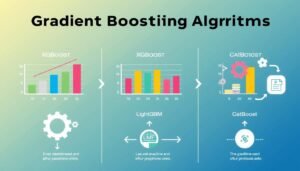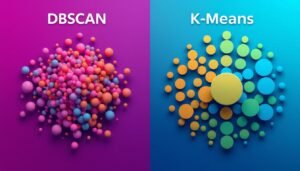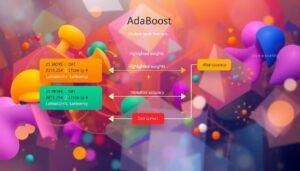Apache Spark™ is a powerful tool for handling large-scale data analytics. It’s known for its simplicity, speed, and scalability. Whether you’re working with batch or streaming data, this platform delivers exceptional performance.
One of its standout features is its support for multiple programming languages. You can use Python, SQL, Scala, Java, or R, making it versatile for various data tasks. Additionally, it executes ANSI SQL queries faster than most traditional data warehouses.
For enterprises and organizations, Spark is a game-changer. It simplifies large-scale data processing, enabling faster insights and better decision-making. If you’re exploring advanced data techniques, you might also find Principal Component Analysis (PCA) helpful for simplifying complex datasets.
Key Takeaways
- Apache Spark™ is a unified engine for large-scale data analytics.
- It processes both batch and streaming data efficiently.
- Supports multiple languages like Python, SQL, Scala, Java, and R.
- Executes ANSI SQL queries faster than traditional data warehouses.
- Essential for enterprises handling large-scale data processing.
Introduction to Big Data Analysis with Spark
In today’s data-driven world, efficient tools are essential for handling massive datasets. One such tool is Apache Spark™, a unified engine designed for large-scale data analytics. Its architecture is built on a distributed computing model, allowing it to process data across multiple nodes seamlessly.
Spark’s ability to integrate with popular programming languages like Python, SQL, Scala, Java, and R makes it a versatile choice for diverse data tasks. Whether you’re working with structured data like SQL tables or unstructured data like JSON files, Spark handles it all with ease. This flexibility is a key part of its appeal.
Understanding the Basics of Spark
At its core, Spark operates on a distributed computing framework. This means it divides data into smaller chunks and processes them in parallel across multiple servers. This approach not only speeds up data processing but also ensures scalability for large datasets.
One standout feature is its adaptive query execution. This optimizes join algorithms and reducer numbers at runtime, leading to faster and more efficient data processing. Whether you’re dealing with batch or streaming data, Spark delivers consistent performance.
Key Benefits for Big Data Processing
Spark offers several advantages for big data analysis. First, it supports both batch and streaming data operations, making it a comprehensive solution for diverse needs. Second, its ability to execute ANSI SQL queries faster than traditional data warehouses sets it apart.
Another benefit is its thriving open-source community. This community continuously contributes to improving Spark’s ecosystem, ensuring it stays at the forefront of big data innovation. For those looking to enhance their skills, exploring free data science resources can be a great starting point.
“Spark’s adaptive query execution and distributed computing model make it a game-changer for big data analytics.”
In summary, Spark’s architecture, flexibility, and community-driven development make it an indispensable tool for modern data analysis. Whether you’re a beginner or an expert, it’s a platform worth exploring.
Step-by-Step Guide to Implementing Spark
Setting up a robust environment is the first step to mastering data analytics with Spark. This guide will walk you through the installation, configuration, and development of your first application. By the end, you’ll have a functional setup ready for real-world tasks.

Installation and Environment Setup
Before diving into Spark, ensure your system meets the prerequisites. You’ll need compatible versions of Java, Python, or Scala installed. These are essential for running Spark’s core components.
Next, download the latest version of Spark from the official website. Extract the files and configure the environment variables. This step ensures Spark runs smoothly on your machine.
For local testing, configure Spark to run in standalone mode. This mode is ideal for beginners and small-scale projects. For distributed computing, set up a cluster using tools like Hadoop or Kubernetes.
Developing and Testing Your First Spark Application
Once your environment is ready, it’s time to write your first application. Start by importing the necessary libraries in your preferred language. Python and Scala are popular choices for their simplicity and power.
Write a basic script to load a dataset and perform simple analytics tasks. For example, calculate the average value of a column or filter rows based on specific criteria. This hands-on approach helps you understand Spark’s functionality.
After writing the code, test it in your local environment. Check for errors and optimize the script for better performance. This step ensures your application is ready for production.
Troubleshooting Tips and Best Practices
Running into issues? Start by checking the logs for error messages. Common problems include missing dependencies or incorrect configurations. Updating your environment variables often resolves these issues.
For better performance, optimize your code by reducing unnecessary operations. Use caching to store frequently accessed data in memory. This technique speeds up processing and improves efficiency.
Finally, stay updated with the latest Spark releases and community contributions. The open-source community continuously improves the platform, making it more reliable and feature-rich.
| Setup Type | Use Case | Advantages |
|---|---|---|
| Local | Small-scale projects, testing | Easy to configure, ideal for beginners |
| Distributed | Large-scale data processing | Scalable, handles complex tasks efficiently |
Leveraging Spark for Enterprise-Scale Projects
Enterprise-scale data projects demand tools that can handle complexity and scale effortlessly. Thousands of companies, including 80% of the Fortune 500, rely on Apache Spark™ to streamline their operations. This platform excels in managing both batch and streaming data, making it a go-to solution for diverse enterprise needs.

Scaling with Batch and Streaming Data
One of the standout features of this platform is its ability to process batch and streaming data simultaneously. This dual capability ensures that enterprises can handle real-time analytics while managing historical data efficiently. Whether it’s financial transactions or IoT sensor data, the system delivers consistent performance.
Optimizing SQL Analytics and Machine Learning Applications
SQL analytics are a cornerstone of enterprise data operations. This platform accelerates query performance, enabling faster insights. Additionally, its machine learning libraries scale seamlessly from development to production, making it a powerful product for AI-driven solutions.
Engaging with the Open-Source Spark Community
The community behind this platform plays a vital role in its continuous improvement. Developers and data scientists worldwide contribute to its ecosystem, ensuring it remains at the forefront of innovation. This collaborative effort enhances its capabilities and keeps it relevant for modern data challenges.
“The adaptability and scalability of this platform make it indispensable for enterprise data solutions.”
Real-world examples highlight its impact. Companies like Netflix and Uber use it to process petabytes of data daily, driving innovation and efficiency. For enterprises aiming to stay competitive, adopting this platform is a strategic move.
Conclusion
The ability to process both batch and streaming data efficiently makes Apache Spark™ a standout tool. Its adaptive query execution and SQL analytics empower businesses to gain insights faster, driving smarter decisions.
The community behind Spark plays a vital role in its continuous improvement. Collaborative efforts ensure it remains innovative and reliable for modern data challenges.
For new users, the step-by-step guidance provided makes implementation straightforward. Whether you’re handling small-scale projects or enterprise-level data, Spark is a game-changer.
Ready to dive deeper? Explore further resources and documentation to unlock the full potential of this powerful platform.














